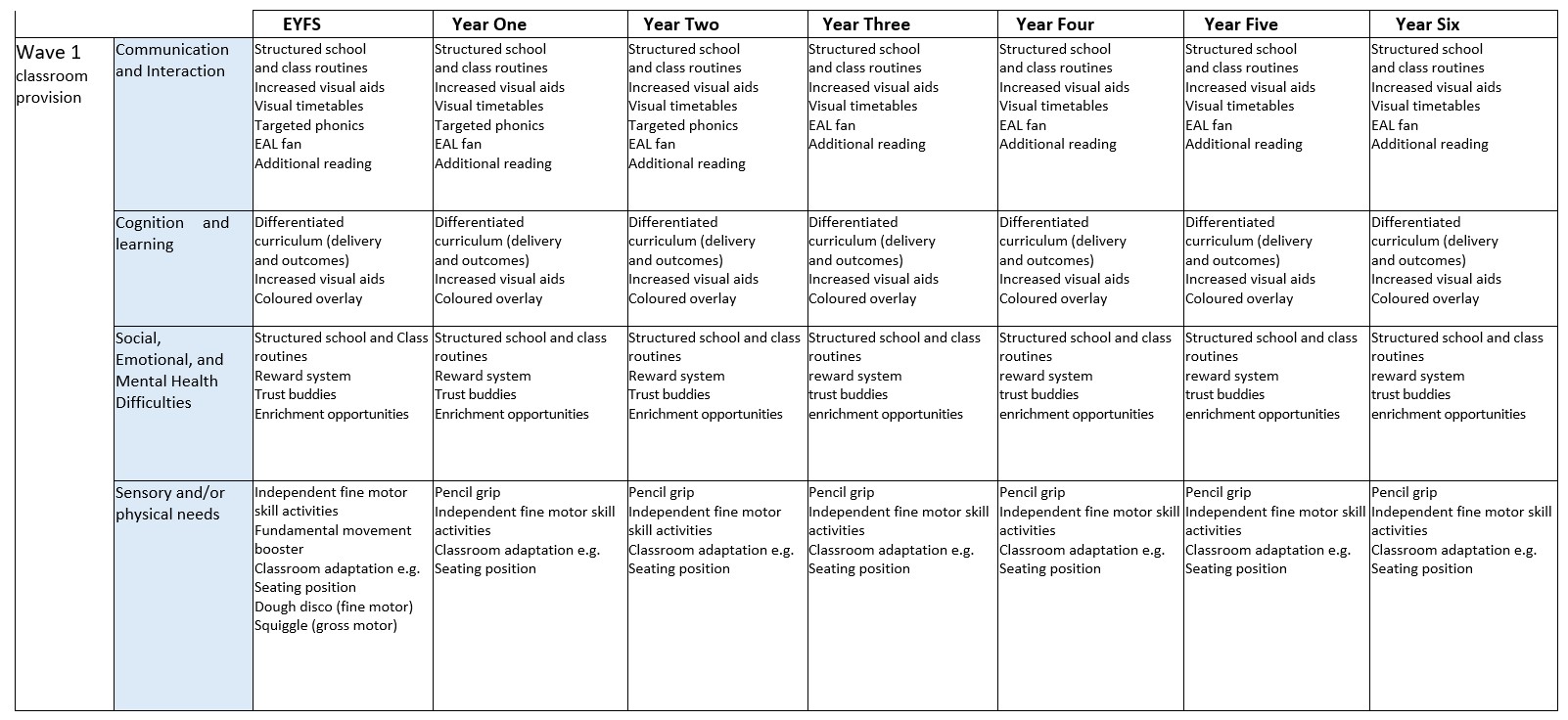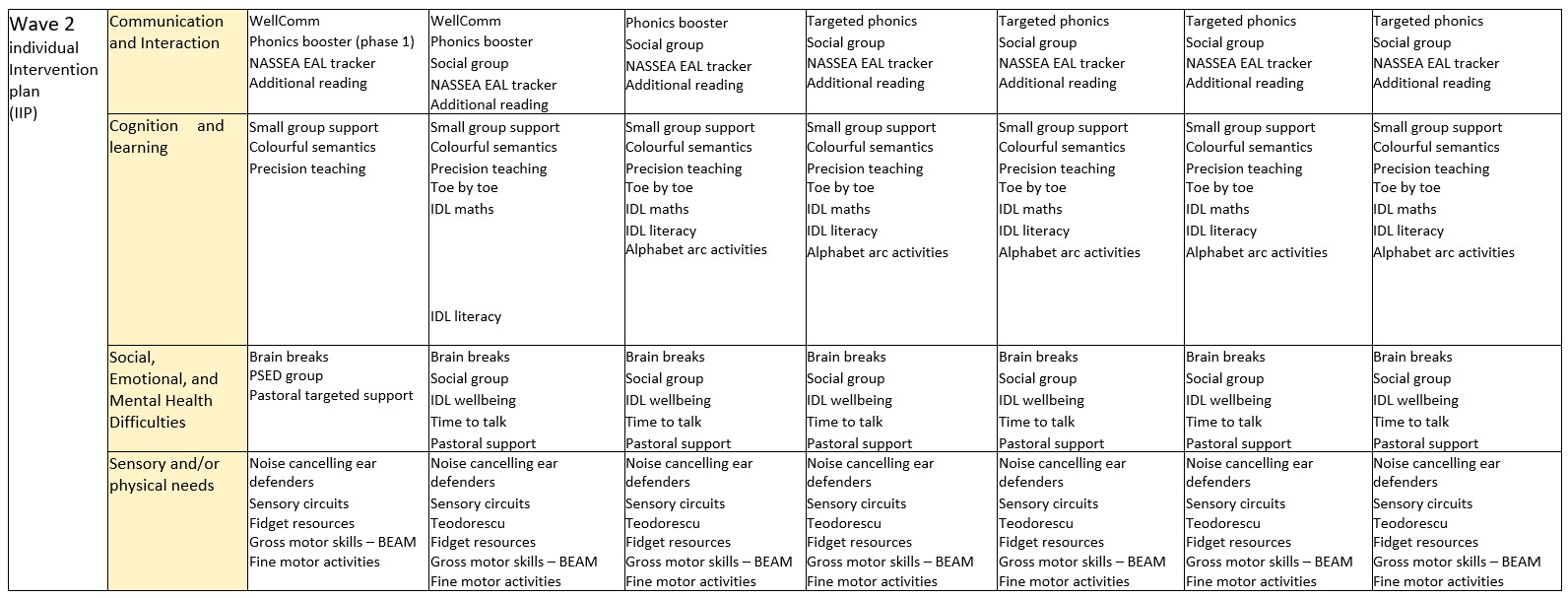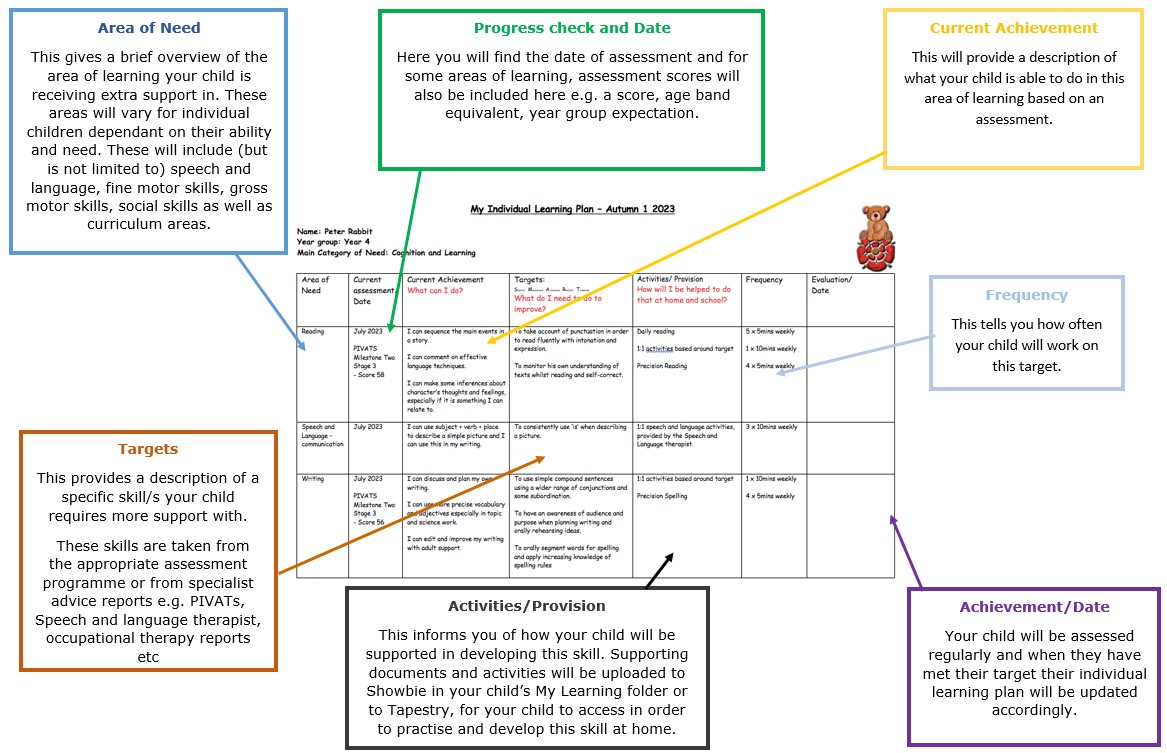At Bowerham Primary and Nursery School, we are committed to meeting the needs of all pupils and aim to raise the aspirations and expectations for all pupils with SEND focusing on the provision and outcomes for the children. We strive to ensure access to a broad and balanced curriculum for all our children within a safe and caring environment. We aim to promote the enjoyment of learning by developing and enhancing the self-esteem, independence and skills that enable each child to realise their potential. We believe that communication and cooperation between home and school is an essential part of this process.
Identifying Special Educational Needs:
Special educational needs are identified from the four broad areas of need as stated in the SEND Code of Practice, 2014 pg. 86. These are:

The purpose of identifying special educational needs is to work out what actions we need to take in school and we always consider the needs of the whole child which will not just include the special educational needs of that child.
The SEND Code of Practice suggests that pupils are only identified as SEN if they do not make adequate progress once they have had all the intervention/ adjustments and good quality personalised teaching. At Bowerham Primary and Nursery School, as part of our graduated approach, we follow a 3-step wave approach.
– Wave 1: classroom provision
– Wave 2: individual intervention plan (IIP)
– Wave 3: Individual Learning Plan (ILP).
Please see the information below for a detailed description of what provisions school can put in place at the varying levels of support.
Wave 1: classroom provision
The first step in responding to individual pupils’ needs is high quality first teaching which is differentiated for individual pupils. The Provision Map below gives an insight in to what this might look like in different year groups across the different areas of need.

Wave 2: Individual Intervention Plan (IIP)
Where children require further support, children will then receive targeted support from teaching assistants and teachers both within and outside the classroom. This is outlined on an individual intervention plan and shared with parents alongside termly reports.

Cycle of IIPs
IIPs are reviewed 3 times each academic year, following a plan do-review-cycle, in line with termly reports.

Wave 3: Individual Learning Plan (ILP)
If a child continues to require additional support, the decision whether to make further special educational provision involves parents, the class teacher and the SENDCo. They will work together to consider all of the information gathered within school about the pupil’s progress, alongside national data and expectations of progress. This includes high quality formative assessment and early assessment materials. For pupils with higher level of need we work closely with outside agencies for advice and support. The provision put in place and any extra support that is required will be in line with the child’s area of need and will be outlined on an Individual Learning Plan (ILP) which will be written together by the class teacher and the SENDCo. At this point children will be added to the school SEND register with parental permission.
Our ILPs allow us to share targets with parents as well as track progress. Below is an example, with detailed description of the different elements of an ILP. Interventions outlined on an ILP will be taken from wave 3 of the provision map as outlined below.


Cycle of ILPs and parent consultations
ILPs are reviewed 3 times each academic year, following a plan do-review-cycle, in line with termly reports. Meetings between teachers and parents to discuss children ILP’s are scheduled three times each year as outlined in the table below.

Pupil Passports
In school, we also use Pupil Passports as part of our graduated response to support children with additional needs. The purpose of a Pupil Passport is to provide a clear overview of a child’s individual strengths, needs, and the strategies in place to support them as part of everyday classroom practice.
By outlining specific support strategies, the Pupil Passport enables personalised learning, helping teachers tailor their approach to meet each child’s individual educational needs. It also serves as a communication tool, ensuring that all staff members working with the child are fully aware of their needs and the best ways to support them. Additionally, it provides essential information on specific conditions such as dyslexia, autism, ADHD, or other learning difficulties.
Beyond daily classroom support, Pupil Passports play a key role in transition planning, ensuring smoother progress between year groups or schools by maintaining consistency in provision.
To foster collaboration, Pupil Passports are shared with parents and carers and made available on children’s Showbie accounts. Where appropriate, they are also discussed with the child in a child-friendly manner, focusing on their strengths as well as areas where they may need support.
Our Pupil Passports include:
- A clear overview of the child’s SEND needs
- An explanation of what this means for the child
- Identification of challenges the child may face
- Effective support strategies to assist learning
- A focus on the child’s strengths and abilities
Pupil Passports are working documents and staff will update them with annotations accordingly as needs change throughout the year, providing an updated version annually on Showbie as children move to the next year group.
